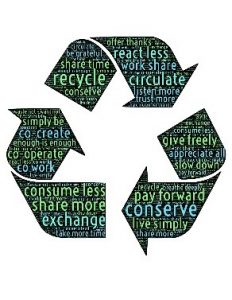Sustainable living can be defined as a practical lifestyle philosophy encouraging to reduce personal, societal and global negative and harmful environmental impact through various eco-friendly methods that will contribute to the positive changes which will work as a counteract to many on-going environmental concerns and problems. In simpler terminology, sustainable living means putting forwards the use of renewable resources rather than the natural non-renewable resources that create a huge amount of waste resulting in depleting and limiting the use for our future generation. Specifically speaking, India’s population is already too high for the amount of land we have, out of which a high percentage is youth population. This brings up the urgency for us to start giving notice to sustainability as we are depleting our resources at an extremely fast rate, because we are living on the borrowed resources from our future generations. The generation that gives the opportunity to India for an accumulated number of employment and technology innovations.
encouraging to reduce personal, societal and global negative and harmful environmental impact through various eco-friendly methods that will contribute to the positive changes which will work as a counteract to many on-going environmental concerns and problems. In simpler terminology, sustainable living means putting forwards the use of renewable resources rather than the natural non-renewable resources that create a huge amount of waste resulting in depleting and limiting the use for our future generation. Specifically speaking, India’s population is already too high for the amount of land we have, out of which a high percentage is youth population. This brings up the urgency for us to start giving notice to sustainability as we are depleting our resources at an extremely fast rate, because we are living on the borrowed resources from our future generations. The generation that gives the opportunity to India for an accumulated number of employment and technology innovations.
 Minimalism and Sustainable Living have often been confused as one another, however they have distinctive characteristics. The term Minimalism indicates the style of living life with the simplest and fewest elements and owning things that add value and meaning to an individual’s life by also removing and cutting out the unwanted clutter & energy in their life. For example; the lives that our ancestors lived were minimalistic, focusing majorly upon hunting for food and survival, whereas sustainable living has a completely different meaning. The two buzz words share common resolutions to differing issues such as clearing out clutter can also mean cluttering out the consumption of luxury goods which is a practice of sustainable living. Hence, Both the practices also reinforce the focus on important things in life rather than materialism, however at the same time they are contrasting terms.
Minimalism and Sustainable Living have often been confused as one another, however they have distinctive characteristics. The term Minimalism indicates the style of living life with the simplest and fewest elements and owning things that add value and meaning to an individual’s life by also removing and cutting out the unwanted clutter & energy in their life. For example; the lives that our ancestors lived were minimalistic, focusing majorly upon hunting for food and survival, whereas sustainable living has a completely different meaning. The two buzz words share common resolutions to differing issues such as clearing out clutter can also mean cluttering out the consumption of luxury goods which is a practice of sustainable living. Hence, Both the practices also reinforce the focus on important things in life rather than materialism, however at the same time they are contrasting terms.
